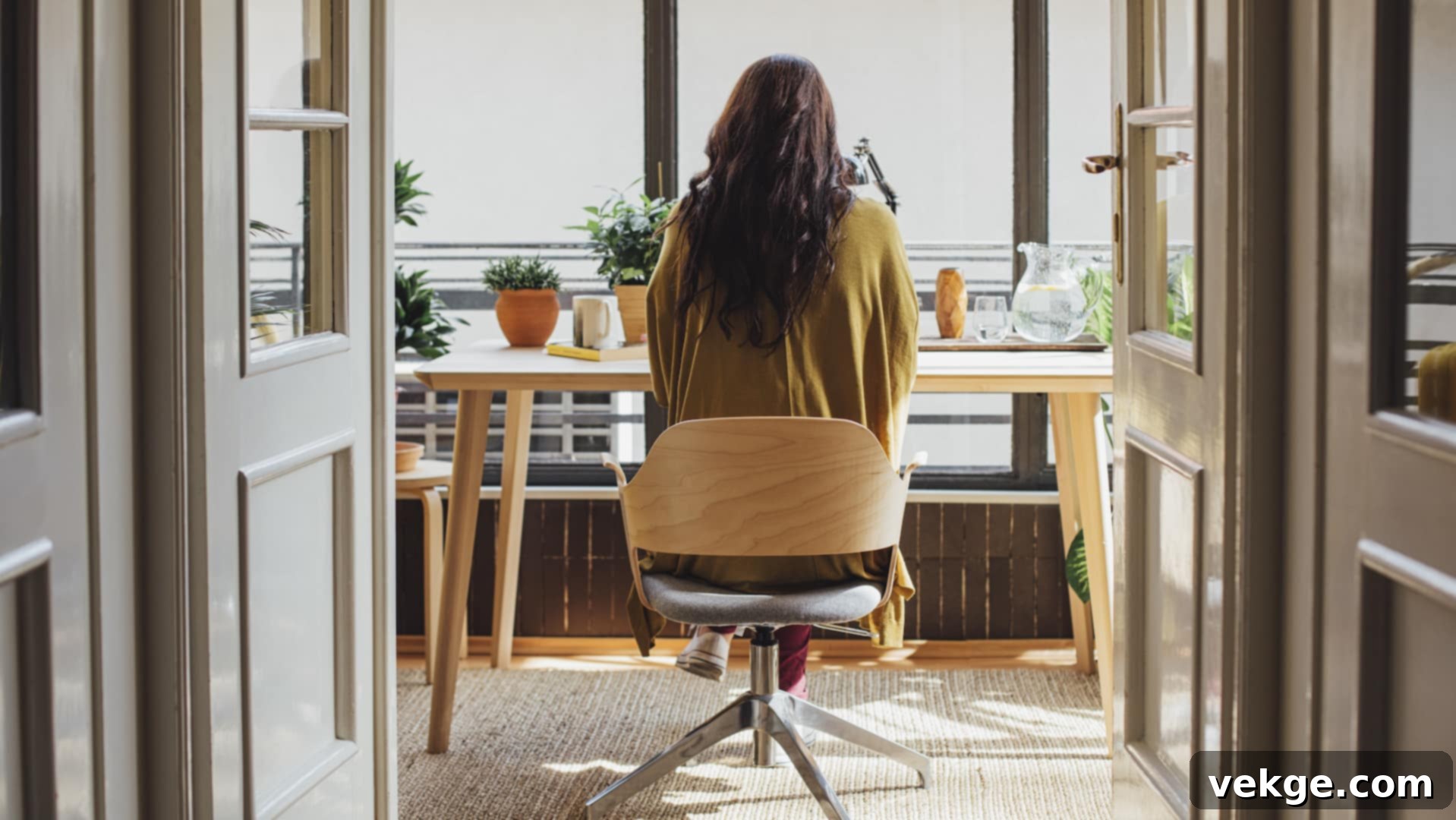Create Your Ideal Home Office: A Comprehensive Guide to Setup, Design & Productivity
Moving into a new home marks an exciting new chapter, often presenting the perfect opportunity to design a dedicated home office space. Whether you’re fully transitioning to remote work, embracing a hybrid model, or simply need a quiet, organized area to manage household tasks and personal projects, establishing an effective home office requires thoughtful planning and careful consideration. A well-designed workspace is more than just a place to put your computer; it’s a sanctuary for focus, creativity, and professional growth, essential for maintaining productivity and a healthy work-life balance.
In this comprehensive guide, we’ll delve into the fundamental elements and smart strategies you need to create a functional, comfortable, and inspiring home office. We’ll explore how to optimize your environment, select the right tools, and implement habits that boost your productivity and ensure your new workspace truly meets your unique needs and preferences, turning it into a powerful asset for your daily life.
Choose The Right Location for Your Home Office
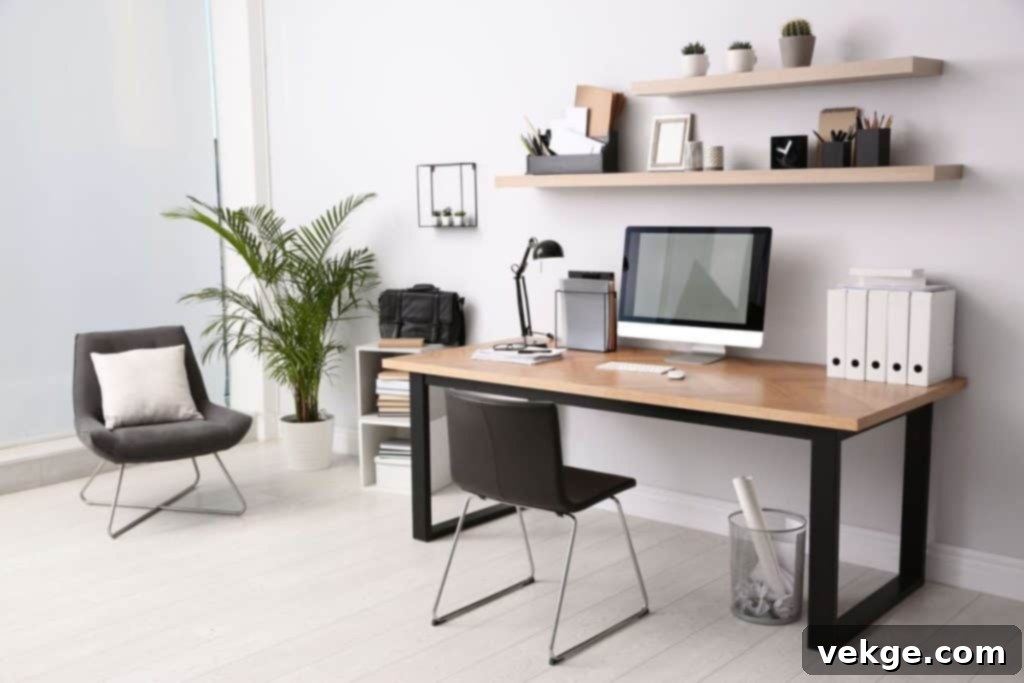
The foundation of a productive home office begins with selecting the ideal location within your home. To minimize distractions and maximize focus, aim for a quiet, well-lit area that is physically or conceptually separated from the main living spaces. This dedicated separation helps establish mental boundaries between work and personal life, crucial for concentration.
When scouting for the perfect spot, consider several key factors. Prioritize natural light, as it significantly impacts mood, energy levels, and reduces eye strain. Proximity to reliable power outlets is essential for all your devices, reducing the need for cumbersome extension cords. Think about privacy – can you take calls without interruption? Also, assess access to amenities like a nearby bathroom or kitchenette, which can save time and maintain workflow during busy periods. Whether it’s a spare bedroom, a quiet corner in a larger room, or even a cleverly converted closet, choose a space that allows you to concentrate without constant interruptions.
Invest In Quality, Ergonomic Furniture
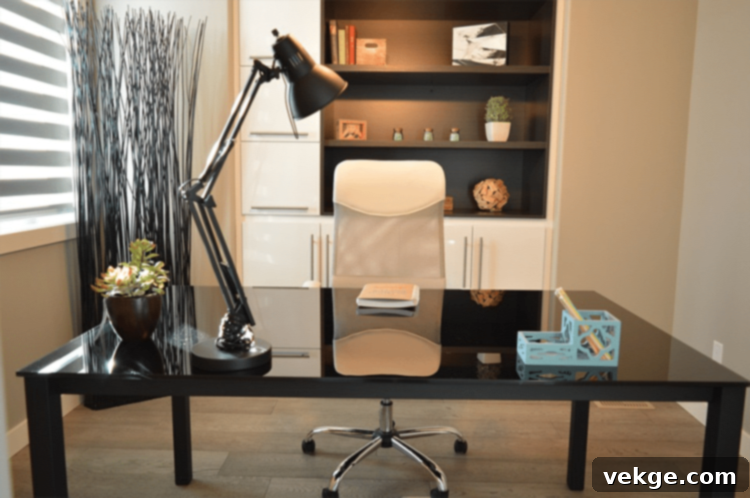
Your furniture is the backbone of your home office, directly impacting your comfort, health, and productivity. Investing in high-quality, ergonomic pieces is not just a luxury; it’s a necessity, especially if you plan to spend long hours working. Begin with a sturdy desk that offers ample workspace for your computer, documents, and other essentials. Consider your specific needs: a standing desk for flexibility, an L-shaped desk for more surface area, or a compact desk for smaller spaces.
Equally important is an ergonomic chair. This isn’t an item to skimp on. A good ergonomic chair provides proper lumbar support, adjustability for height and armrests, and encourages good posture, preventing discomfort and potential long-term health issues like back pain and repetitive strain injuries. Beyond your primary workstation, think about storage. Bookcases, filing cabinets, and wall-mounted shelves are invaluable for keeping your workspace organized, clutter-free, and efficient. Choose furniture that not only meets your functional requirements but also complements your home’s aesthetic, creating a cohesive and inviting environment.
Prioritize Comfort And Ergonomics for Health and Productivity

Comfort and ergonomics are paramount, particularly when setting up a home office where you’ll likely spend extended hours. An ergonomically optimized setup can prevent strain, improve circulation, and significantly boost your overall well-being and productivity. Your chair should be fully adjustable, allowing you to fine-tune seat height, backrest angle, and armrest position to support your natural posture and provide adequate lumbar support, thus preventing discomfort and back strain.
Proper monitor placement is critical. Position your computer monitor at arm’s length, with the top of the screen at or slightly below eye level. This helps reduce neck and eye strain. Invest in an ergonomic keyboard and mouse to maintain a neutral wrist position and minimize the risk of repetitive strain injuries like carpal tunnel syndrome. Furthermore, consider incorporating a footrest if your feet don’t comfortably rest flat on the floor, or a standing desk converter to allow you to alternate between sitting and standing throughout the day. Regularly varying your posture can improve circulation, increase energy levels, and reduce the sedentary risks associated with prolonged sitting.
Create A Functional and Efficient Layout
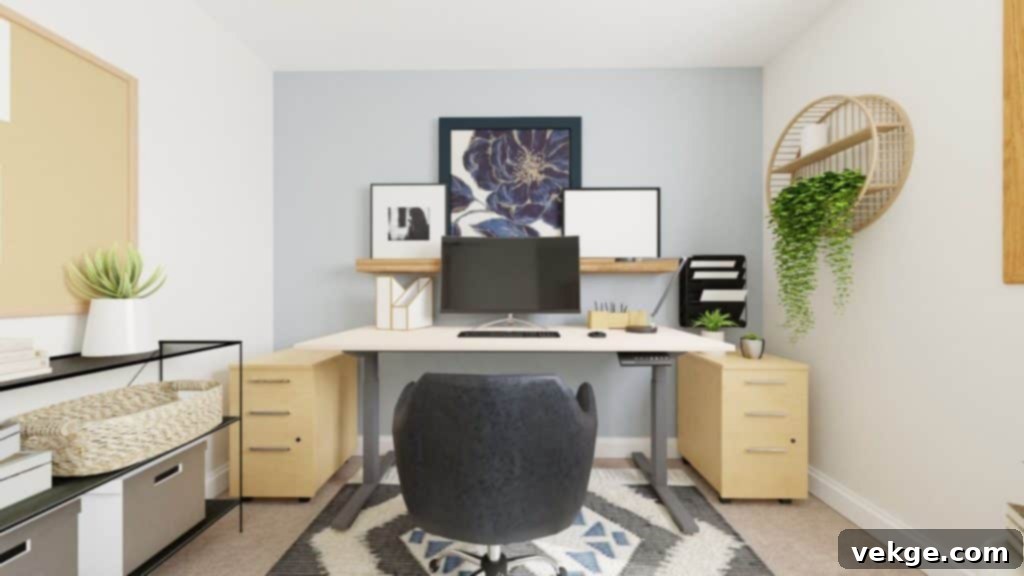
A well-thought-out layout is paramount to optimizing your home office space for maximum productivity and efficiency. Plan the arrangement of your furniture and equipment in a way that supports a smooth workflow and provides easy, intuitive access to all your essential items. Consider zoning your space: define a primary work zone, a storage zone, and perhaps even a small relaxation or reading nook, if space allows.
Strategically position your desk near power outlets to simplify connecting electrical devices and minimize visible cables. Speaking of cables, effective cable management is crucial not only for aesthetics but also to prevent clutter and tripping hazards. Utilize cable ties, sleeves, trays, or grommets to keep wires tidy and out of sight. Beyond furniture placement, evaluate natural light direction to avoid glare, ensure adequate ventilation for fresh air, and consider acoustics to minimize echoes. A comfortable and inviting workspace is key to sustained focus.
Equip Your Office With Essential Supplies and Peripherals
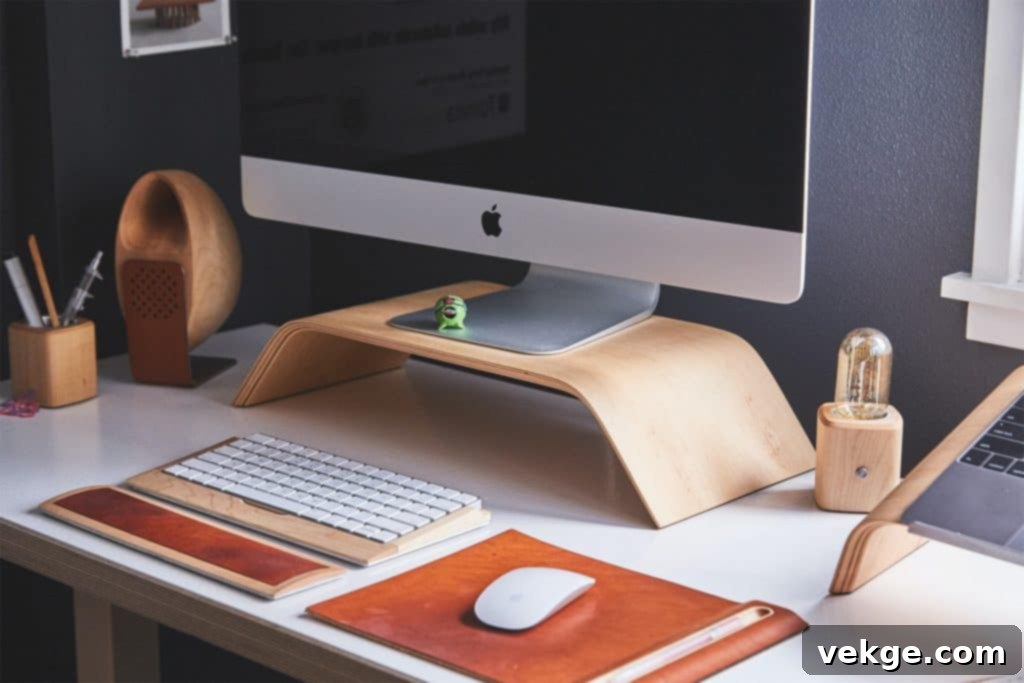
A well-stocked home office is fundamental for maintaining organization and consistent productivity. Begin by investing in basic office supplies like pens, notebooks, sticky notes, highlighters, and paper clips – these seemingly small items are crucial for jotting down ideas, tracking tasks, and keeping paper documents in order. Consider a whiteboard or bulletin board for visual organization and brainstorming.
Beyond stationery, essential office equipment includes a high-quality printer, scanner, and shredder. A multifunction printer can handle printing, scanning, and copying needs efficiently. Choose between an inkjet (good for color and photos) or a laser printer (ideal for high-volume text printing) based on your requirements. A reliable shredder is vital for disposing of sensitive documents securely. Additionally, ensure you have basic stationery items such as envelopes, postage stamps, and any specialized forms or business cards needed for your professional correspondence. Don’t forget an external hard drive or a robust cloud solution for backing up important files.
Don’t Forget About Essential Technology (Tech)
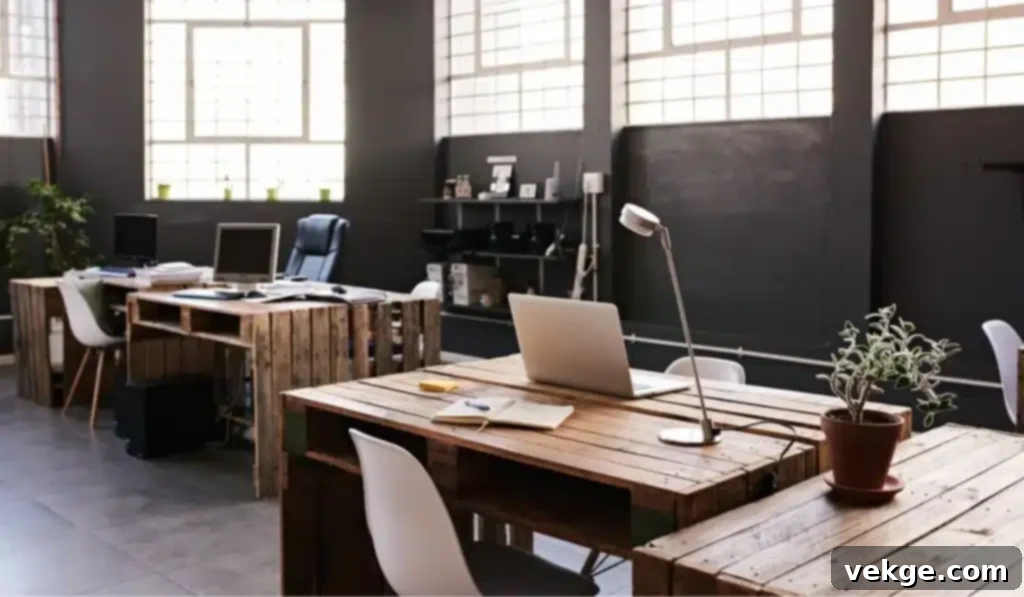
In the digital age, technology is the engine of any modern home office. Equipping your workspace with the right tools and devices is non-negotiable for seamless workflow and high performance. Your primary investment should be a reliable computer or laptop with sufficient processing power, RAM, and storage to handle your specific work tasks effectively, whether it’s graphic design, data analysis, or general administrative duties. Consider your internet connection – a fast and stable connection is crucial for virtual meetings and cloud-based applications.
Beyond the core machine, think about additional peripherals that enhance your computing experience and comfort. A high-resolution external monitor (or even two) can significantly boost productivity by providing more screen real estate. An ergonomic keyboard and a responsive, wireless mouse are essential for reducing strain. Don’t overlook a quality webcam and a good pair of noise-canceling headphones for crystal-clear virtual communication. A reliable power strip with surge protection is also a must-have to safeguard your valuable electronics.
Invest In Time-Saving Software Solutions

Beyond hardware, the right software tools can dramatically streamline your workflow, automate repetitive tasks, and significantly boost overall productivity in your home office. Look for software solutions specifically tailored to your professional needs. This might include project management tools (like Asana, Trello, or Monday.com) to track tasks and deadlines, accounting software (e.g., QuickBooks, FreshBooks) for managing finances, or customer relationship management (CRM) systems if you interact with clients. Communication platforms like Slack or Microsoft Teams are indispensable for remote collaboration, while video conferencing tools like Zoom or Google Meet facilitate virtual meetings.
Consider cloud-based software options for enhanced flexibility and accessibility, allowing you to work from anywhere and collaborate with team members seamlessly. Furthermore, practical utilities can be immense time-savers. For instance, converting PDF to Word documents can be a common, yet time-consuming task if you lack the proper tools. Investing in an intuitive, reliable PDF conversion tool will enable you to edit documents confidently and efficiently, saving precious minutes that add up over time.
Ensure Adequate and Thoughtful Lighting
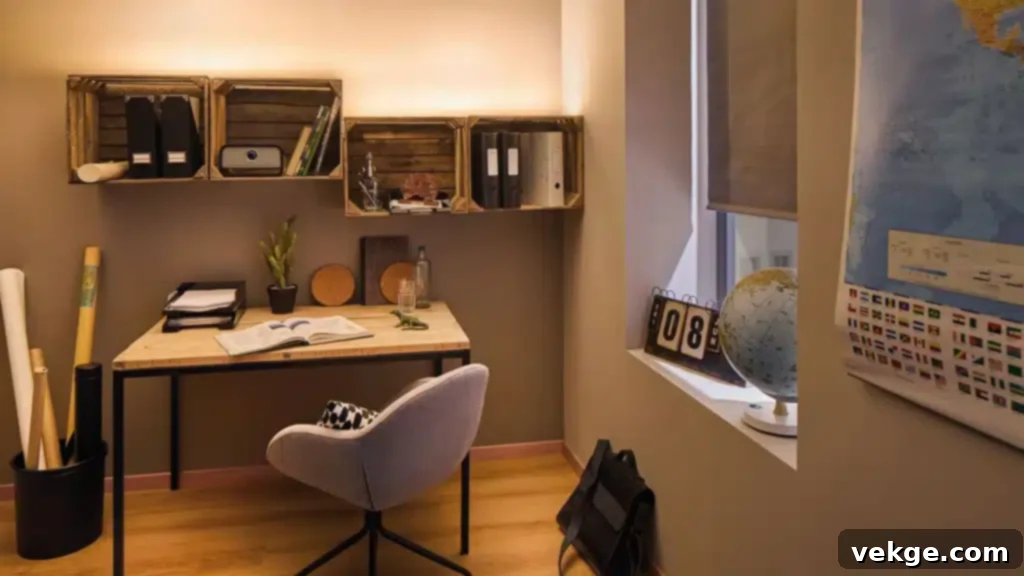
Proper lighting is a critical, yet often overlooked, component of a comfortable and productive home office environment. Maximizing natural light is the best starting point. Position your desk near a window or skylight to harness daylight, which can significantly reduce eye strain, boost your mood, and regulate your circadian rhythm, leading to better sleep and increased energy levels. Avoid placing your monitor directly in front of or behind a window to prevent glare or backlighting issues.
Supplement natural light with a layered lighting strategy. This includes ambient lighting (general room illumination, perhaps from overhead fixtures), task lighting (like a dedicated desk lamp for focused work), and even accent lighting to highlight decor. Choose LED light bulbs with a color temperature that mimics natural daylight (around 5000K-6500K for a cool white, or 3500K-4500K for a neutral white) to create a bright, inviting, and energizing atmosphere. Adjustable lighting options can further enhance comfort throughout the day.
Incorporate Personal Touches to Inspire and Motivate

While functionality is key, incorporating personal touches into your home office decor is essential for creating a space that feels uniquely yours and actively inspires creativity and motivation. This personalization transforms a generic workspace into a personal haven. Display photos of loved ones, meaningful artwork, or mementos from cherished experiences that bring you joy and motivation. These visual cues can provide a much-needed mental break or a spark of inspiration.
Introduce elements of nature by adding plants or greenery, which can improve air quality, reduce stress, and add a refreshing touch to your workspace. Consider the impact of color psychology; choose colors that resonate with you and promote the desired mood – calming blues, energizing greens, or focused grays. A comfortable rug, decorative curtains, or stylish accents in your favorite colors or patterns can further enhance the aesthetic appeal, making your home office a cozy, inviting, and truly inspiring environment where you love to work.
Establish Clear Boundaries And A Productive Routine

When working from home, the lines between professional and personal life can easily blur. Establishing clear boundaries and a consistent routine is crucial for maintaining a healthy work-life balance and preventing burnout. Communicate your work hours and the importance of uninterrupted focus to family members or housemates. This might involve setting specific “do not disturb” times or simply closing your office door as a visual cue.
Develop a daily routine that mirrors a traditional workday as much as possible. This includes dedicated start and end times, scheduled breaks (for lunch, stretching, or a short walk), and defined downtime. A consistent routine helps your brain switch into and out of work mode, reducing stress and improving focus during work periods. Remember to incorporate self-care activities into your day to recharge, such as mindfulness exercises, a hobby, or physical activity, ensuring that your home office supports both your professional endeavors and your personal well-being.
Stay Organized And Keep Your Workspace Clutter-Free
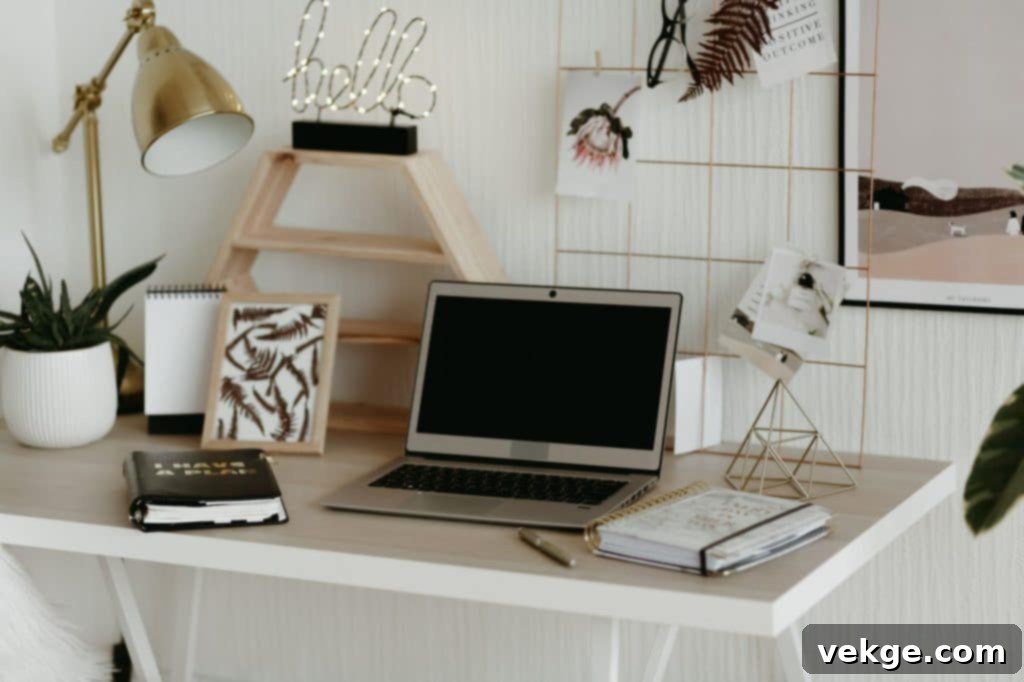
Staying organized and clutter-free is not merely about aesthetics; it’s a foundational practice for maintaining a productive and efficient home office environment. A tidy space reduces mental fatigue, improves focus, and minimizes time wasted searching for items. Implement effective organizational systems, such as filing cabinets for physical documents, digital folders for electronic files, storage bins for supplies, or desktop organizers to keep frequently used items within reach.
Develop a clear system for managing paperwork, digital assets, and office supplies. This ensures easy and quick access to essential items exactly when you need them. Regularly declutter and purge unnecessary items – adopt a “one in, one out” policy for new purchases, or schedule monthly reviews to tidy up. A clean and organized home office space not only looks professional but also actively promotes a calm mindset, allowing for better concentration and heightened creativity.
Invest In Soundproofing Solutions for a Peaceful Workspace
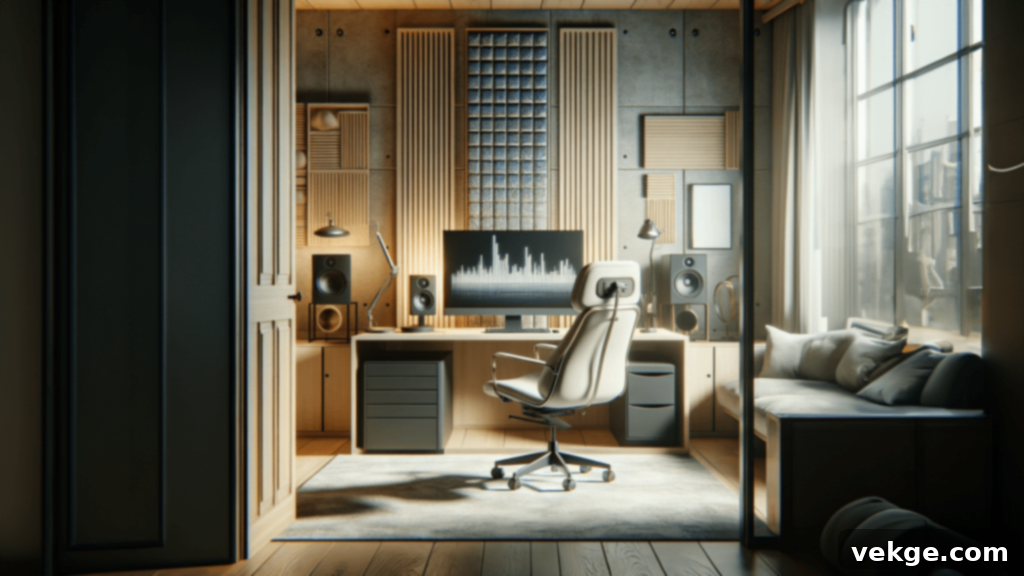
For many, a quiet and peaceful work environment is paramount for maintaining deep focus and high productivity in a home office. External noises – from household activities to street sounds – can be significant distractions. Investing in soundproofing solutions can create a more serene workspace. Begin with simple measures: heavy, insulated curtains can absorb sound and block noise from windows, while rugs or carpeting can dampen echoes and foot traffic sounds.
For more significant noise reduction, consider installing acoustic panels on walls or exploring weatherstripping for doors and windows to seal gaps. If complete silence isn’t achievable, employing a white noise machine or playing soft, instrumental background music can effectively mask ambient sounds, creating a more conducive atmosphere for concentration and creativity. Noise-canceling headphones are also an excellent personal solution for immediate focus.
Implement Robust Security Measures
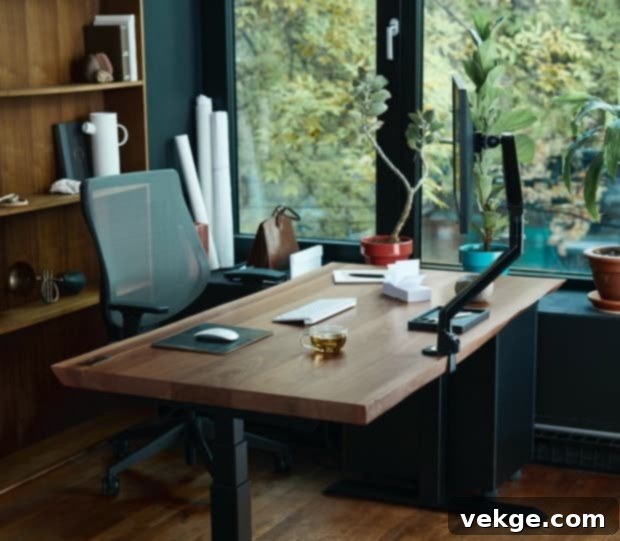
Protecting sensitive information, valuable data, and physical assets is paramount for maintaining security and confidentiality in your home office, especially if you handle client data or personal records. Implement robust digital security measures: use strong, unique passwords for all devices and accounts, enable two-factor authentication (2FA) wherever possible, and ensure you have up-to-date antivirus software and a firewall. Encrypt sensitive files and utilize secure cloud storage solutions for backups. Consider a Virtual Private Network (VPN) if your work involves handling highly confidential information.
Physical security is equally important. Secure important documents in a lockable filing cabinet and use a paper shredder for disposal of sensitive materials. While your home office is part of your home, reinforcing general home security with reliable locks, and possibly security cameras or an alarm system, can deter intruders and enhance the safety of your entire property, including your dedicated workspace.
Final Thoughts on Crafting Your Ideal Home Office
Setting up a home office in your new abode is more than just arranging furniture; it’s an exciting opportunity to craft a truly dedicated workspace that not only meets your professional needs but also enhances your overall well-being. By strategically choosing the right location, investing wisely in quality, ergonomic furniture, and prioritizing comfort and healthy posture, you lay a solid foundation for long-term productivity and physical comfort.
Equipping your office with essential supplies and the right technology, complemented by time-saving software, ensures you have all the tools necessary for efficient work. Don’t underestimate the power of thoughtful lighting, which can significantly impact your mood and reduce eye strain. Incorporating personal touches transforms a functional space into an inspiring haven. Crucially, establishing clear boundaries and a consistent routine, alongside a commitment to staying organized and considering soundproofing, will help you maintain focus and a healthy work-life balance.
With careful planning, attention to detail, and a willingness to adapt your space as your needs evolve, your home office can become a comfortable, inspiring, and highly productive environment. It’s a space where you can not only thrive in your professional endeavors but also enjoy the flexibility and benefits that remote work offers, ultimately leading to greater success and satisfaction.
